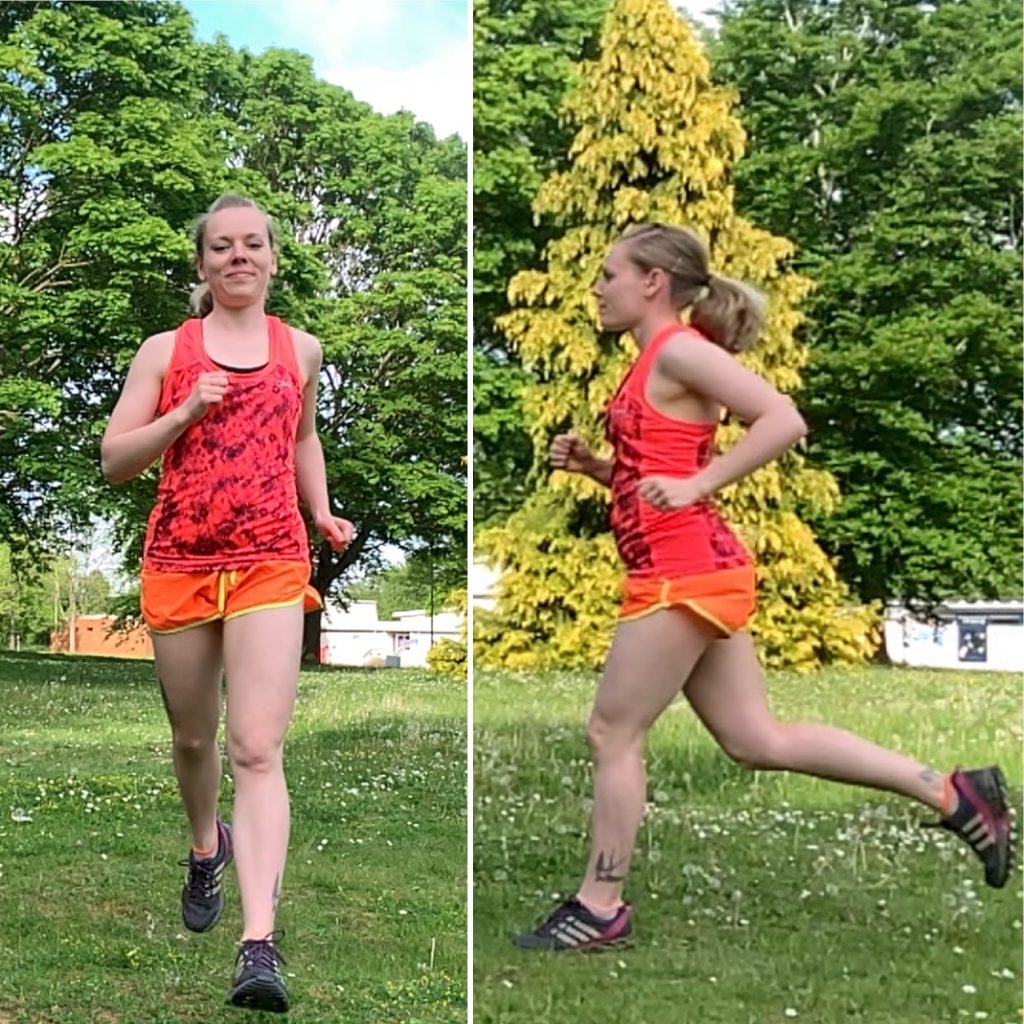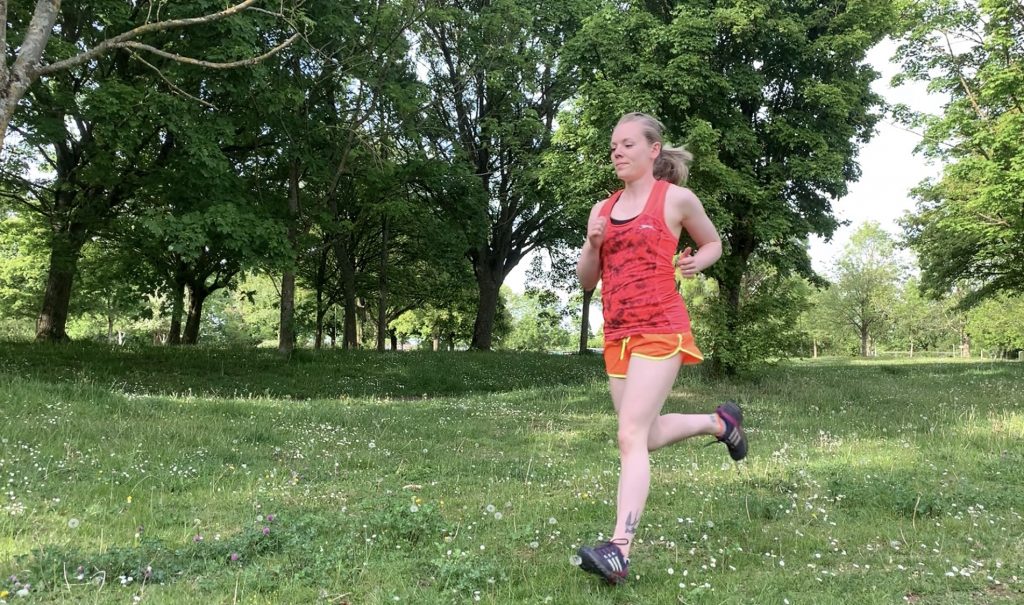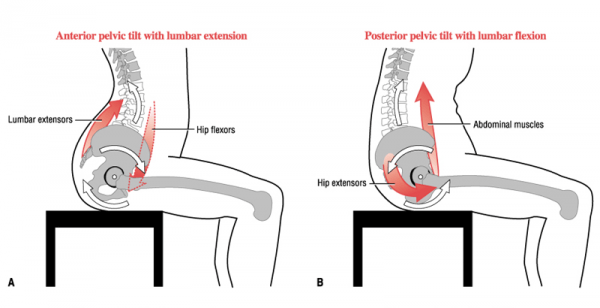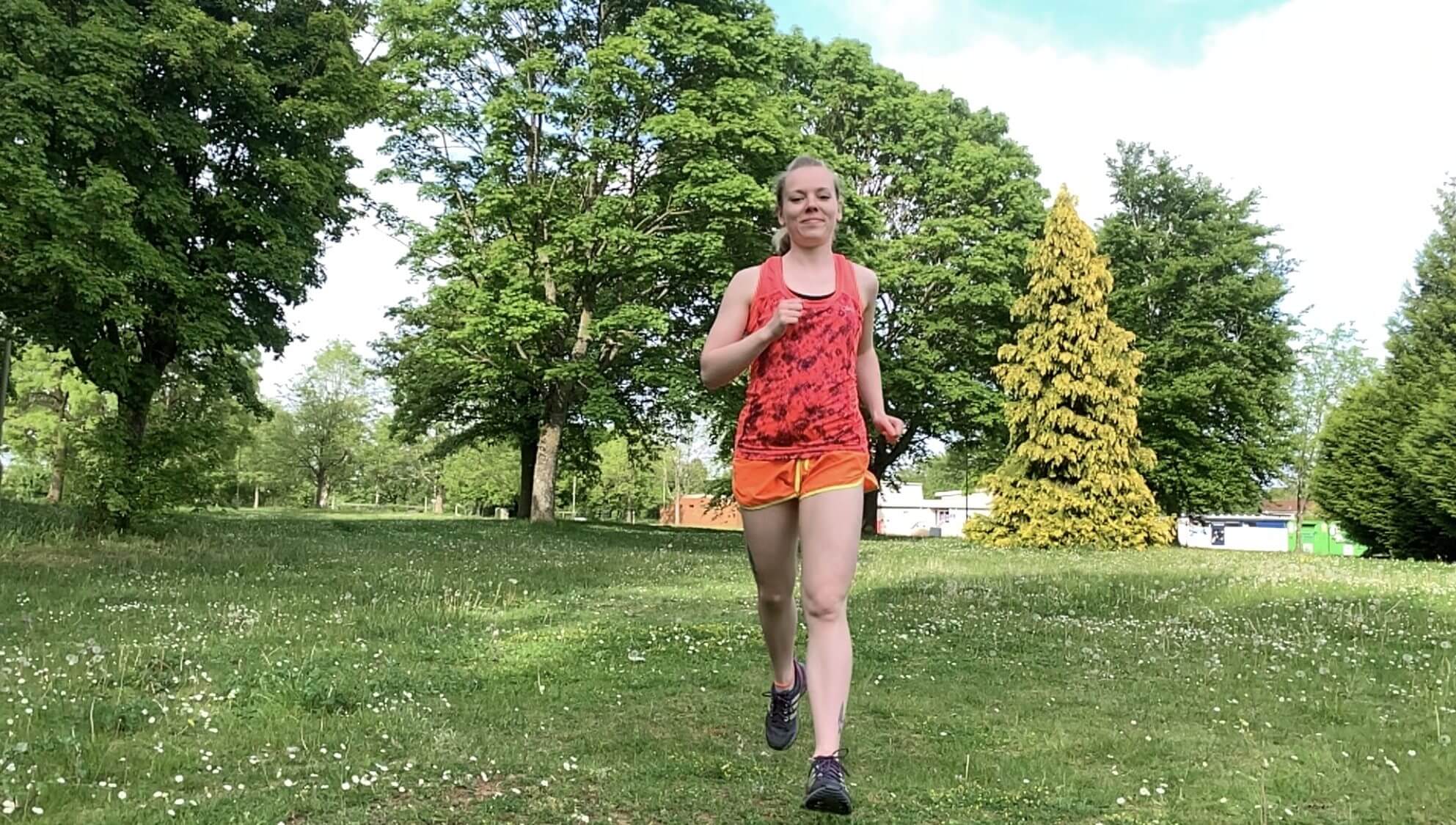For some runners, good running form comes instinctually. They know how to run correctly without having to learn or over think it but that isn’t always the case for everyone.
Good running form can help reduce the risk of developing injuries in the future and also create a more efficient running style. Which could help you gain that PB you’ve been working on. So it might be worth checking your technique to see if anything can be tweaked.
In todays blog post we’re going to discuss how to develop a good running form, that can help stave off injuries and also make your running technique more energy efficient.

Here are my tips for running correctly with good form. We’ll start from the head and work our way downwards:
Head:
Keep your head up – always look ahead and not at your feet or the ground as you run. If you’re running trails or uneven ground, scan the path ahead. Keep your chin up and back, not dropped toward your chest or jutting out in front of you.
Shoulders:
Many runners tense their shoulders up, around their ears when they are working hard. But this causes fatigue and can slow you down. So, shoulders should be relaxed. If you feel them tensing up, shake out your arms and keep your shoulders low and loose.
Arms:
Your legs do what your arms tell them to do. So you want to use the power of your arm swing to propel you forward and encourage your legs to drive forward in a nice straight line. That means swinging your arms forward and back, rather than across your body.
Swinging your arms across your body encourages your torso to twist and rotate which hinders your gait and can lead to injuries.
So, keep your elbows bent at about 90degrees and cup your hands into loose fists, with your fingers lightly touching your palms.

Torsos:
Run “tall” so your back is comfortably straight and aim for a 3-4 degree forward lean. This is such a small lean it is almost undetectable when running. Avoid leaning forward from the waist as that wastes energy and again changes your running gait.
A forward lean disengages the core whilst putting excessive force on the back and glute muscles which reduces the effectiveness of your stabilising and powerhouse muscles.
Leaning too far forward can result in lower back pain, neck and shoulder discomfort, side stitches and early onset of fatigue, which will cause you to slow down or require more effort than is necessary.
Dr Stephen Preece who has a Ph. D in engineering mathematics, has been conducting a running performance clinic at the University of Salford in Manchester for over a decade. And he decided to compare the forward lean of elite athletes who were capable of running a 10K in 32:00 mins vs recreational runners whose times were around 43:00.
And what he found was that the elite group maintained a forward lean of 3.5 degrees across all speeds. Whereas the non-elite runners increased their lean to almost 8 degrees when attempting faster paces. Which suggests that the forward lean hinders the runner so a more upright running action is more effective.
Hips:
Keep them pointing straight ahead and upright, not tilting forward in an anterior tilt or back ward in a posterior tilt.

Legs and Feet:
Your feet should feel quick and light. Shorten your stride so your feet land underneath your hip. If your foot strike hits the pavement ahead of your hips, it will put pressure on them as well as your knees. Land on your heel to midfoot and push off through the ball of your foot. Imagine yourself as a spring, that you’re popping off the ground.
I hope you found this helpful. If you enjoyed this blog, you can check out my other blogs, Why Yoga is Great For Runners and 8 Things to Know Before Your First Yoga Class here:


Recent Comments